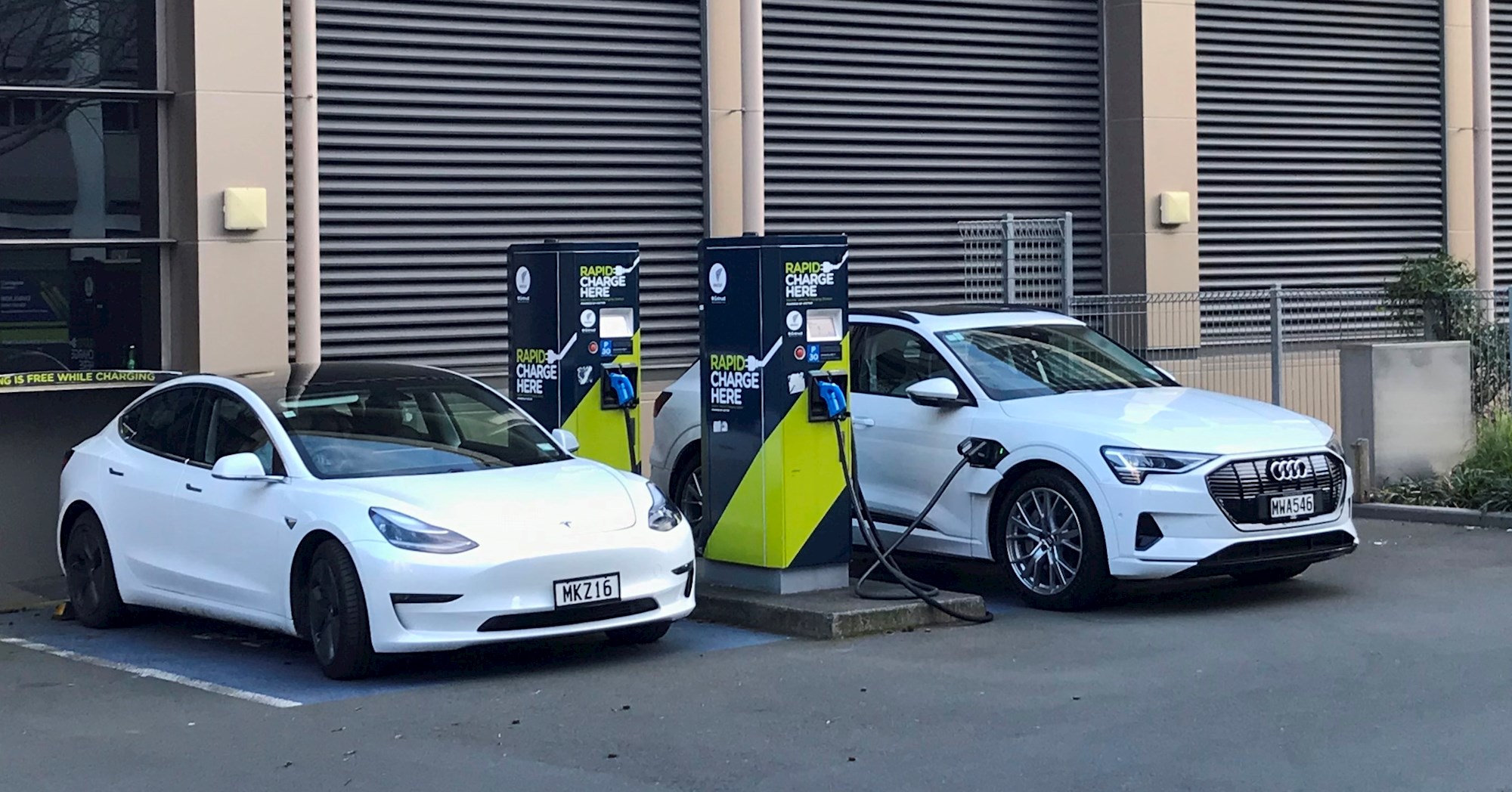We’re close to the end of the year and therefore wrapping up our first series of Green articles in partnership with Audi.
We’ve covered a lot of ground over the months and in the best traditions of the season, we thought it’d be great to look back at the highlights and consider what we’ve learned.
Charging a BEV isn’t so scary after all
Charging a Battery Electric Vehicle (BEV) is very different to filling a conventional car with petrol or diesel, that’s for sure. But the technology and logistics are nothing to be feared.
You need to be aware of public fast-charge stations as you’ll use then occasionally, but the truth is that 80 per cent of BEV charging is still done from the comfort of home. You can simply plug into a domestic socket, but that’s pretty slow. Upgrade to a “wallbox” with around 7.2kW and you’ll get over 250km of range from an eight-hour plug-in overnight.
New Zealand’s EV infrastructure is actually pretty good

Oh yes, about those fast-charge stations. They’re great for a quick boost when you’re travelling or running low, because a typical 50kW station (compare that to the wallbox figure above) could add 200km range to a modern BEV like an Audi e-tron in half an hour.
That charge-station infrastructure is now really good in New Zealand. ChargeNet is the biggest provider (certainly not the only one) and it has over 200 locations live. Basically, if your BEV has 200km range, there aren’t many places you can’t drive in NZ between charging points.
Those stations are getting faster to meet the capabilities of the latest BEVs. There are already new “Hyper Chargers” that will allow the likes of an e-tron to charge at its maximum rate of 150kW.
Downsizing is a good idea
It’s not all about BEVs. Carmakers are making huge strides in petrol/diesel efficiency by getting high outputs out of small-capacity engines, while still achieving ever-better fuel economy.
Tiny 1.0-litre three-cylinder powerplants in the likes of the Audi A1, Skoda Scala and Volkswagen T-Cross are making over 80kW – what you’d expect of a larger four-cylinder engine in years gone by.
It’s thanks to technology like direct injection, turbocharging and mild hybridisation – which is also being used on larger-capacity engines to similar effect, giving more performance with truly impressive fuel economy.
The key to EV ownership is mindset
But back to those BEVs. Anxiety about range and charging time is one of the biggest obstacles to BEV ownership.
But really? According to Ministry of Transport figures, 90 per cent of NZ travel by car is less than 90km.The average daily distance is 29km, the average commute 22km. So BEVs offer plenty of range for most drivers, most of the time. And remember, leaving from home in the morning, your BEV will be “full”.
The key is to plug in when you can, rather than emptying the “tank” like you do in a petrol car. It’s grazing rather than feast-and-famine.
The future will still be fast
The old idea of BEVs being slow and boring is just that: a very old idea. New models like Audi’s e-tron S and the e-tron GT (0-100km/h in under 3.5 seconds) show the potential for enthusiast appeal and true thrills from plug-in cars.
It’s guilt-free performance too, because NZ has over 80 per cent renewable electricity. That’s a good feeling if you’re driving any kind of BEV in fact.




